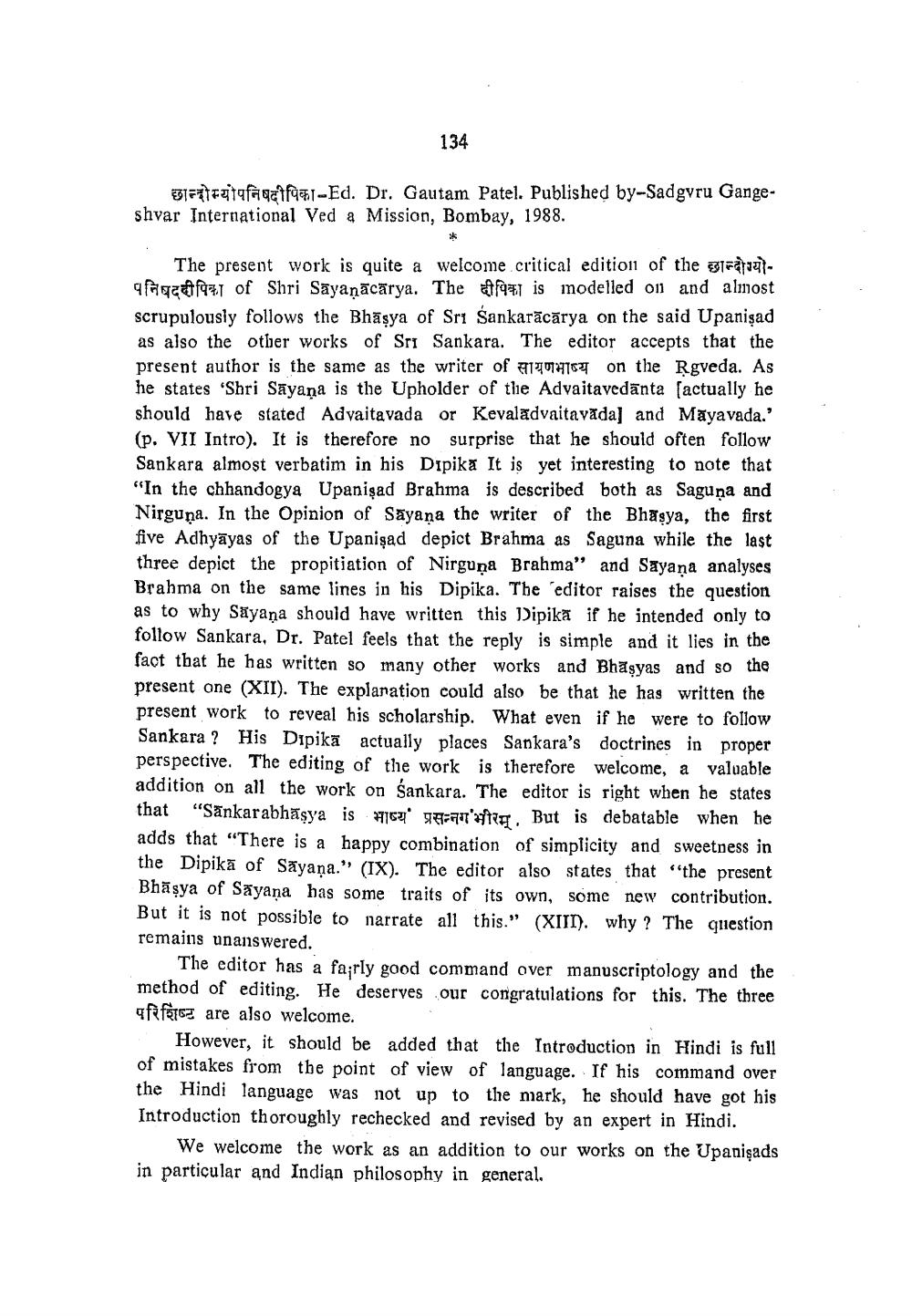________________
134
-Ed. Dr. Gautam Patel. Published by-Sadgvru Gangeshvar International Ved a Mission, Bombay, 1988.
The present work is quite a welcome critical edition of the - पनिषददीपिका of Shri Sāyanācārya. The दीपिका is modelled on and almost scrupulously follows the Bhasya of Sri Sankaracarya on the said Upanisad as also the other works of Sri Sankara. The editor accepts that the present author is the same as the writer of a on the Rgveda. As he states 'Shri Sayana is the Upholder of the Advaitavedanta [actually he should have stated Advaitavada or Kevaladvaitavada] and Mayavada.' (p. VII Intro). It is therefore no surprise that he should often follow Sankara almost verbatim in his Dipika It is yet interesting to note that "In the chhandogya Upanisad Brahma is described both as Saguna and Nirguna. In the Opinion of Sayana the writer of the Bhasya, the first five Adhyayas of the Upanisad depict Brahma as Saguna while the last three depict the propitiation of Nirguna Brahma" and Sayaṇa analyses Brahma on the same lines in his Dipika. The editor raises the question as to why Sayana should have written this Dipika if he intended only to follow Sankara, Dr. Patel feels that the reply is simple and it lies in the fact that he has written so many other works and Bhasyas and so the present one (XII). The explanation could also be that he has written the present work to reveal his scholarship. What even if he were to follow Sankara? His Dipika actually places Sankara's doctrines in proper perspective. The editing of the work is therefore welcome, a valuable addition on all the work on Sankara. The editor is right when he states that “Sānkarabhāsya is भाष्य प्रसन्नगभीरम् But is debatable when he adds that "There is a happy combination of simplicity and sweetness in the Dipika of Sayaṇa." (IX). The editor also states that "the present Bhasya of Sayana has some traits of its own, some new contribution. But it is not possible to narrate all this." (XIII). why? The question remains unanswered.
The editor has a fairly good command over manuscriptology and the method of editing. He deserves our congratulations for this. The three aff are also welcome.
However, it should be added that the Introduction in Hindi is full of mistakes from the point of view of language. If his command over the Hindi language was not up to the mark, he should have got his Introduction thoroughly rechecked and revised by an expert in Hindi.
We welcome the work as an addition to our works on the Upanisads in particular and Indian philosophy in general.




